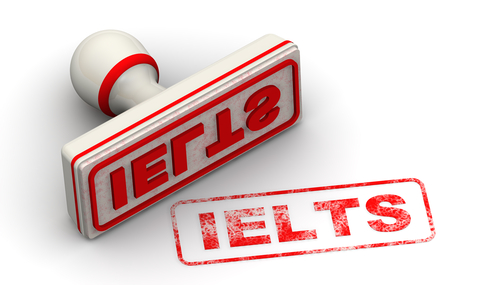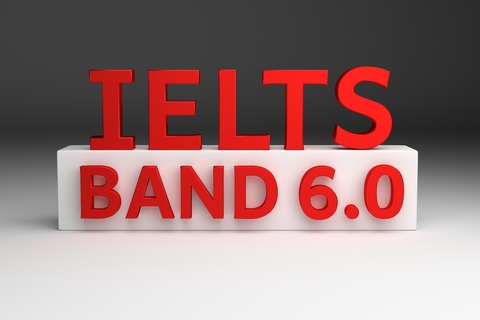Helpful Resources
-
TIPS FOR INTERVIEWS
(Text here)
-
When presenting a resume as a job seeker you must consider it is the hiring managers’ first impression of you. Having the knowledge that a first impression is of great value consideration should be given to the content and layout of your resume. Is the information relevant to the job opening you desire? Are you up to date with technology, or do you require additional training?
Does your resume properly convey your experience? So ask yourself what can you offer the hiring manager? What positive feedback have you been given, and is there anything negative you think should be addressed?
Your Recruitment specialist can assist you with writing or reformatting your resume if there is a need for it.
Below are some useful tips for writing your resume and common mistakes that should be avoided.
No matter how well written, your resume won't get a thorough reading the first time through. Generally a resume gets scanned for 25 seconds. Scanning is more difficult if it is hard to read, poorly organized or exceeds two pages.
- Use a logical format and wide margins, clean type and clear headings
- Selectively apply bold and italic typeface that help guide the reader's eye
- Use bullets to call attention to important points (i.e. accomplishments)
Hiring managers, especially in technical fields like engineering, seek candidates that can help them solve a problem or satisfy a need within their company. Consequently, you can't be a solution to their problems without stating how you solved similar problems in other companies and situations.
- Focus on what you did in the job, NOT what your job was there's a difference
- Include a one or two top line job description first, then list your accomplishments
- For each point ask yourself, what was the benefit of having done what I did?
- Accomplishments should be unique to you, not just a list of what someone else did
- Avoid using the generic descriptions of the jobs you originally applied for or held
Q: What's the most common resume mistake?
A: Making too many general claims and using too much industry jargon that does not market the candidate. A resume is a marketing document designed to sell your skills and strengths rather than just portray a bio of the candidate.
- Include and highlight specific achievements that present a comprehensive picture of your marketability
- Quantify your achievements to ensure greater confidence in the hiring manager and thereby generate interest percentages, dollars, number of employees, etc.
- Work backwards to quantify your accomplishments by asking, If I had not done X, what could have happened?
Unlike advertising and design professionals who have greater creative license in designing their resume for those fields, the mechanical engineering industry won't be impressed and may be turned off by distinctive resume design.
- Err on the side of being conservative stylistically
- Your accomplishments, error-free writing, grammatically-correct, clean, crisp type and paper will make the impression for you
A Career Summary is designed to give a brief overview of who you are and what you do. Most Objectives sound similar: Seeking a challenging, interesting position in X where I can use my skills of X, Y, and Z to contribute to the bottom line. Not telling at all.
- Grab a hiring manager's attention right from the beginning, remembering you have only 25 few seconds to make a good impression
- Spend time developing a summary that immediately gets their attention, and accurately and powerfully describes you as a solution to their problems
For unemployed candidates, handing out resumes should be a full-time job. The majority of mid- to senior-level positions are filled through networking, so contact absolutely everyone you know in addition to recruiters who are in a position to hire you or share insights. Networking can include
- Personal business contacts, people you've worked for or who worked for you
- Vendors and sales representatives you've dealt with in the past five years
- People listed in the alumni directory of your alma mater
With a solid resume in hand you'll greatly increase your odds of earning a closer look and getting that interview.
Marilyn Borysek, ASME Career Center

Complete this form, and submit to our professional staff, you will be contacted within 2 business days by our company with a solution Apply today!
-
Would you show up for a job interview wearing jeans, shorts, or grubby sneakers? Would you chew gum during the interview or arrive in dishevelled or wrinkled clothes? Wearing inappropriate or outlandish attire to a job interview can potentially cost you the job. How you present yourself during an interview is important.
However, it does make sense to dress your best for the interview, regardless of the dress code at the organization.
If you're in doubt about how to dress for an interview it is best to err on the side of conservatism.
It is much better to be overdressed than underdressed . If you're not sure, check with the person who scheduled the interview and ask.
Here's a quick look at the basics:
Here are examples of interview outfits for men. For a professional interview, men can default to wearing a suit. All clothes should fit well and not have any stains. Here are the fundamental items a man wears during a professional interview:
- Suit (solid color - navy, black, or dark grey)
- Long sleeved shirt (white or coordinated with the suit)
- Belt
- Tie (here's how to tie it)
- Dark socks, conservative leather shoes
- Little or no jewellery
- Neat, professional hairstyle
- Limit the aftershave
- Neatly trimmed nails
- Portfolio or briefcase
In general, fashion for women is more complicated and varied, which makes assembling an interview outfit a bit more challenging for women than it is for men. For instance, for any job interview where a woman is wearing a dress or skirt, she needs to determine if she should wear pantyhose or if bare legs are acceptable. Women also need to consider interview accessories, and choose an appropriate purse - here are the best interview bags, options that are professional, large enough to fit a resume, and aren't flashy.
Here are some examples of good interview outfits for women, and here are your best interview outfits if you're a woman in college. And here are the fundamental building blocks of what women should wear to professional interviews:
- Suit (navy, black, or dark grey) - make sure the suit's skirt is long enough so you can sit down comfortably
- Coordinated blouse
- Conservative shoes
- Limited jewellery (no dangling earrings or arms full of bracelets)
- No jewellery is better than cheap jewellery
- Professional hairstyle
- Professional hairstyle
- Light make-up and perfume
- Neatly manicured clean nails
- Portfolio or briefcase
When the workplace or the job is less formal, the dress code may be as well. If you're not sure what to wear, it's fine to check with the person scheduling the interview. However, it's still important not to dress like a slob.
Business casual sounds like a breeze -- no more worries about what to wear to work, right? Not quite. How do you dress down for work or an interview without looking like you're headed to a day at the beach?
For men, appropriate business casual attire is dress slacks or chinos, a shirt with or without a tie, dark socks and dress shoes. Avoid wearing polo shirts to an interview, even if they are acceptable for the job in question.
Women should wear a combination of a skirt or dress slacks, blouse, sweater, twinset, jacket (optional) and hosiery (optional) with closed toe shoes.
- Khaki, corduroy, twill or cotton pants or skirts
- Sweaters, twinsets, cardigans, polo/knit shirts
- Solid colors work better than bright patterns
Men
- Khaki, gabardine or cotton pants, neatly pressed
- Cotton long-sleeved button-down shirts, pressed, polo shirts or knit shirts with a collar
- Sweaters
- Leather shoes and belt
- Tie optional
Look Before You Leap: If you're new to the company, avoid dressing like you're heading to a picnic until you understand the company standard. Err on the side of being conservative rather than showing up under dressed until you check with HR or a colleague to determine what exactly business casual means for your company.
Maintain Consistency: If you wear professional and conservative outfits Monday through Thursday, don't show up Friday looking unrecognizable.
No matter what kind of company you work for, maintaining a consistent image helps to establish trust and credibility with you as an employee.
Consider Your Calendar: If you're meeting with clients or scheduling a business lunch, dress on the conservative side out of to respect the people you're meeting with; save the casual comfort for a time when you'll be in the office all day.

Complete this form, and submit to our professional staff, you will be contacted within 2 business days by our company with a solution Apply today!






